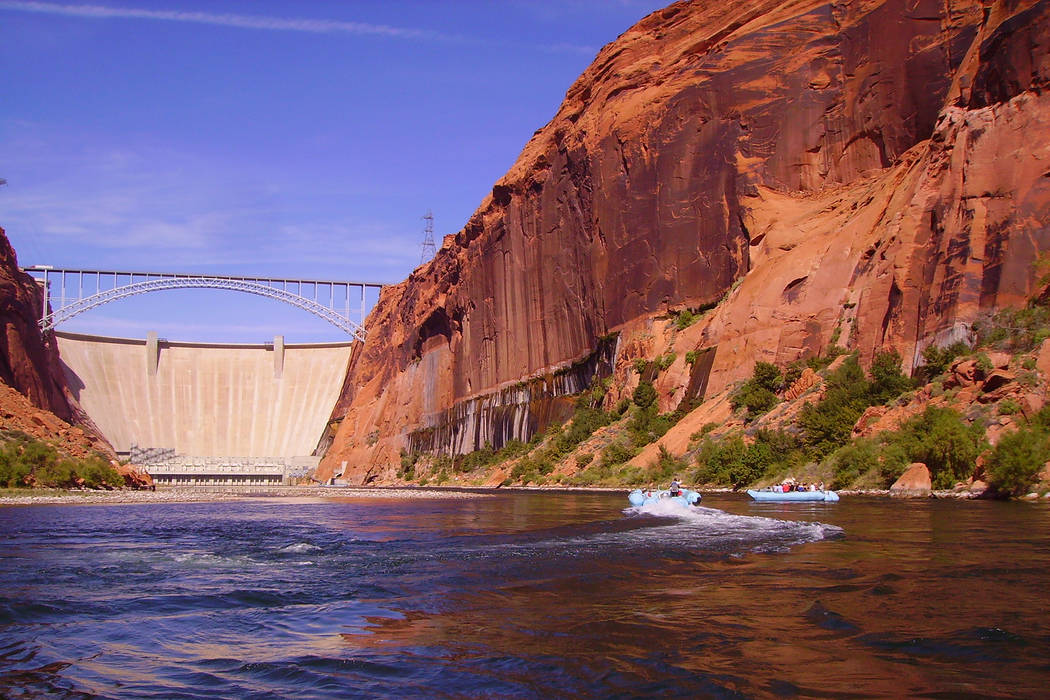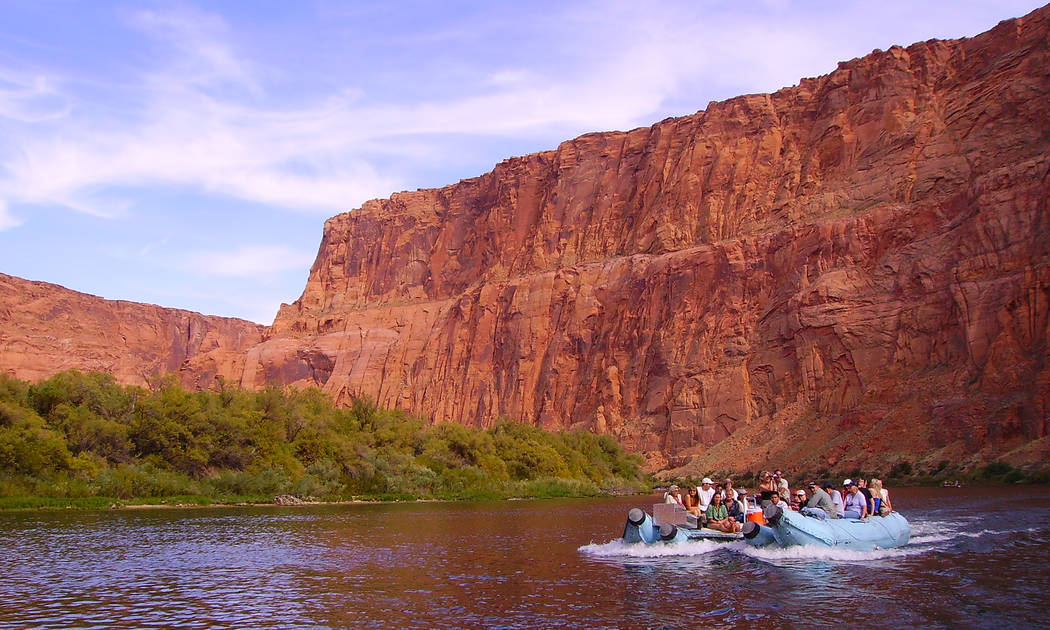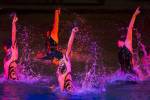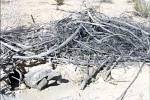Explore a hidden wonderland on Glen Canyon raft trip
One of the most enchanting stretches of the Colorado River begins at the base of Glen Canyon Dam and winds about 15 miles downstream to Lees Ferry.
It’s difficult to access by land, so the most enjoyable and easiest way to see this hidden wonderland is by taking a raft trip with a local tour company.
This is a half-day trip on smooth water, rather than a whitewater thriller, so it’s suitable for nearly everybody ages 4 and older.
When you first board the raft, you will have a close-up view of the dam. As you travel downstream, you will be treated to stunning scenery as red and orange cliffs soar hundreds of feet above.
Within these cliffs, you might see small waterfalls and cascades, alcoves and hanging gardens of wildflowers. A variety of birds — including ospreys, great blue herons and bald eagles — make their home here.
The trip includes a relaxing stop on a sandy beach where you can swim, enjoy lunch and take a short, easy hike to see Native American petroglyphs.
Even on the hottest day, a quick dip in the river will be refreshingly cold. Average temperatures along this section of the river range from 50 to 60 degrees. For rafting tour information, contact Wilderness River Adventures at riveradventures.com or 800-992-8022.
Fly-fishing is popular along the river. Anglers launch their boats at Lees Ferry and head upstream for the day in pursuit of many types of fish, including rainbow and brown trout.
From the 1870s until 1928, when the first Navajo Bridge was built, Lees Ferry served travelers and locals, who needed to cross the Colorado River.
If you go
Directions: From Las Vegas, take Interstate 15 north for about 135 miles to Utah Route 9 (Exit 16: Hurricane/Zion National Park). Drive nine miles and go right onto Utah Route 59 east. This 61-mile paved road becomes Route 389 when you enter Arizona and then becomes U.S. 89A north when turning left in Fredonia, Arizona, just a few miles south of Kanab, Utah. From Kanab, take U.S. 89 east for about 70 miles to Lake Powell and Page, Arizona.
What to pack: Bring a small backpack or a day bag not more than 20 inches wide or long as you will have to pass through a strict security check point. Wear a lightweight long-sleeved shirt, shorts and a bathing suit under your clothes and apply sunscreen. Wear a brimmed hat, water shoes, water sandals or sneakers. Bring a refillable water bottle, food and a camera. Be sure to bring proper identification for the checkpoint.
Length of stay: Minimum of two nights in Page, Arizona, or Kanab, Utah, so you have time to explore the area.
Lodging and information: For reservations and more information about the area, contact the Page Visitor Center, 6 N. Lake Powell Blvd., Page, Arizona, at 928-645-9496 or visitpagelakepowell.com.
































